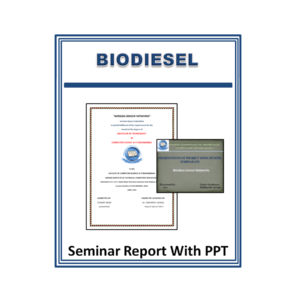Description
INTRODUCTION
In biology, lipids comprise a group of naturally occurring molecules that include fats, waxes, sterols, fat-soluble vitamins (such as vitamins A, D, E, and K), monoglycerides, diglycerides, triglycerides, phospholipids, and others. The main biological functions of lipids include storing energy, signaling, and acting as structural components of cell membranes. Lipids have applications in the cosmetic and food industries as well as in nanotechnology.
Lipids Seminar Report
Page Length : 13
Content :
- Introduction
- Definition
- Different Types Of Lipids
- Function Of Lipids
- Characteristics Of Lipids
- Examples Of Lipids
- Advantages And Disadvantages Of Lipids
- References
Lipids Presentation Report (PPT)
Page Length : 41
Content :
- Introduction
- Definition
- Importance of Lipids
- Functions
- Major Lipids Of Physiological Significance
- Applications
- Advantages
- Disadvantages
- References










Reviews
There are no reviews yet